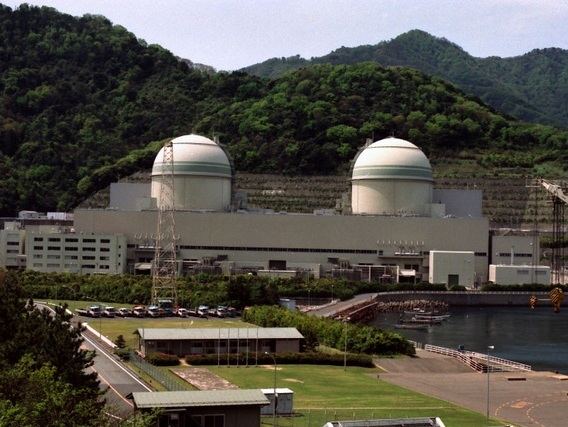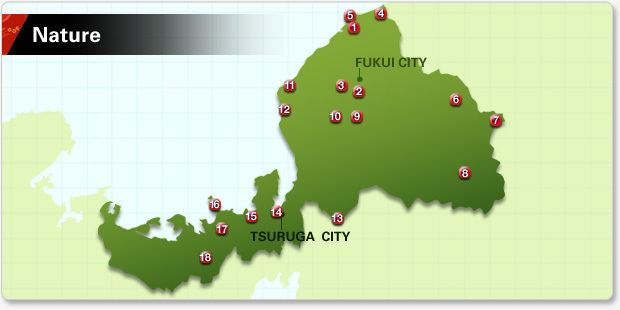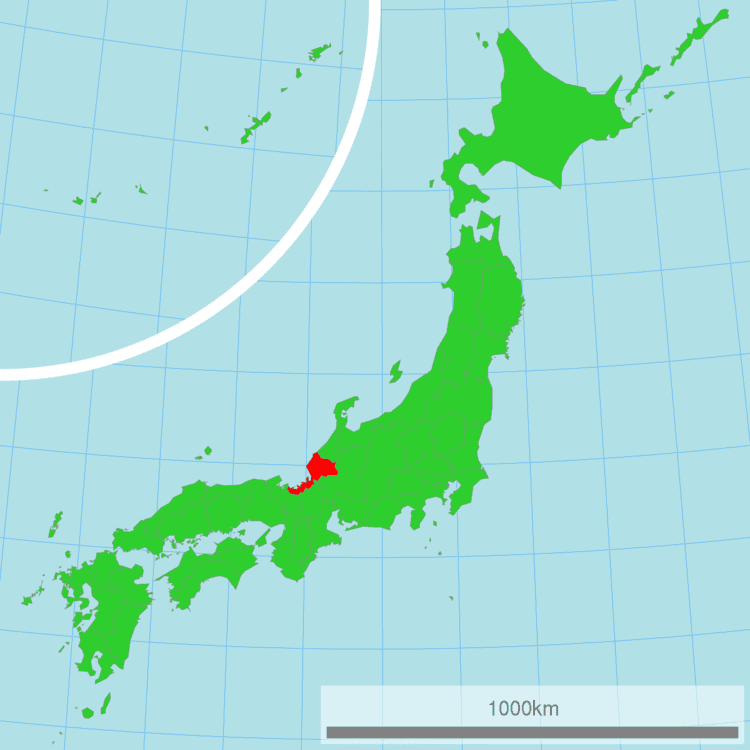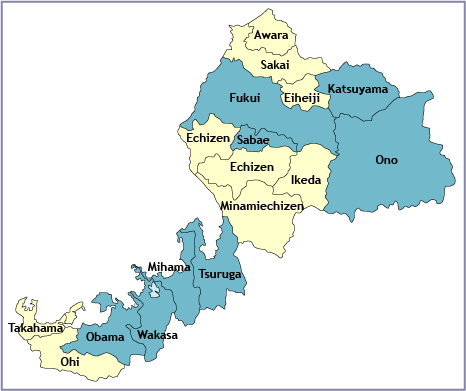Country Region ChubuHokuriku Governor Issei Nishikawa | Area 4,188.99 km2 Capital Fukui | |
 | ||
Colleges and Universities University of Fukui Destinations Points of interest Tojinbo, Fukui Prefectural Dinosaur Museum, Eihei-ji, Yoshizaki-gobo, Obama Castle | ||
Population 803,180 (Mar 31, 2012) | ||
Map of Fukui Prefecture
Fukui Prefecture (福井県, Fukui-ken) is a prefecture of Japan located in the Chūbu region on Honshū island. The capital is the city of Fukui.
Contents
- Map of Fukui Prefecture
- Japan travel fukui prefecture beautiful country side fukui04
- Azalea flower park sabae city fukui prefecture japan
- Prehistory
- History
- Geography
- Cities
- Towns
- Economy
- Demographics
- Culture
- Friendship cities
- University
- Railroad
- Expressway and Toll Road
- National Highway
- Port
- Tourism
- References

Japan travel fukui prefecture beautiful country side fukui04
Azalea flower park sabae city fukui prefecture japan
Prehistory
The Kitadani Dinosaur Quarry, on the Sugiyama River within the city limits of Katsuyama, has yielded animals such as the megaraptoran Fukuiraptor kitadaniensis, hadrosauroid Fukuisaurus tetoriensis, coelurosaurian Fukuivenator paradoxus and titanosauriform Fukuititan nipponensis as well as an unnamed dromaeosaurid.
History

Fukui originally consisted of the old provinces of Wakasa and Echizen, before the prefecture was formed in 1871.

During the Edo period, the daimyō of the region was surnamed Matsudaira, and was a descendant of Tokugawa Ieyasu.

During World War II, the city was heavily bombed and its palace, surrounded by a moat, was demolished. The Fukui Prefectural government buildings were built on the site.
Geography
Fukui faces the Sea of Japan, and has a western part (formerly Wakasa) which is a narrow plain between the mountains and the sea, and a larger eastern part (formerly Echizen) with wider plains including the capital and most of the population. The province lays within Japan's "Snow country".
As of 31 March 2008, 15% of the total land area of the prefecture was designated as Natural Parks, namely the Hakusan National Park; Echizen-Kaga Kaigan and Wakasa Wan Quasi-National Parks; and Okuetsu Kōgen Prefectural Natural Park.
Cities
Nine cities are located in Fukui Prefecture:
Towns
These are the towns in each district:
Economy
Demographics
Fukui is one of the less populated prefectures of Japan; in September 2015 there were an estimated 785,508 people living in 281,394 households. As seen in most of Japan, Fukui is facing the problem of both an aging and decreasing population; 28.6% of the population were over the age of 65 in July 2015 and the population has decreased 2.6% from the 806,000 measured in the October 2010 national census.
